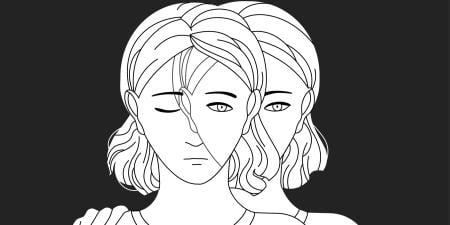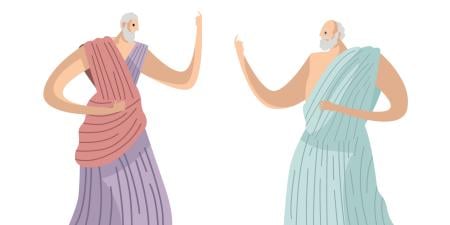Case
You look up to see Dr. Syed walk into the attending physician lounge, throwing her long white coat on the table while collapsing onto the couch in one fluid, practiced movement. You haven’t seen her looking this beat since you were emergency medicine residents together, and certainly not since you were both hired as tenure-track attending physicians.
“What’s up?” you ask her.
“It’s these students,” she says, exasperated.
“What happened?” you ask.
She bolts upright on the couch, fists clenched at her sides. “I have students being rude to nurses, not preparing for rounds, being cavalier about the practice of emergency medicine,” she barks. “People’s lives are at stake! I absolutely cannot have that kind of behavior in the ER.”
“So, write them up,” you say nonchalantly. “This isn’t the first time you’ve had bad students. The ER seems to attract them.”
“That’s the problem,” she said, slumping back against the cushion. “I know I need to be pretty critical of these students, but after that student harassment workshop last month, it seems we can’t say anything negative about them.”
“But you just said patients were at stake,” you interject. “They’re just going to keep doing it if you don’t say something.”
“I know, I know,” she admits, “but you saw what happened to Abena, yeah? A few legitimate critical comments about a student’s performance—trust me; I worked with him before—and all of a sudden, off the tenure track. You think that’s a coincidence?”
You doubt it was a coincidence. “So, what are you going to do? Using negative language in evals is unavoidable, especially with this batch of students.”
“I don’t know,” she mutters. “This ‘antiharassment’ movement,” she says, making air quotes with her fingers, “is getting out of hand. I feel like I’ve been muzzled. How am I supposed to teach if I’m worried I’ll lose my job or a promotion if I criticize my students?”
Commentary
We could discuss this case from the standpoint of what’s most likely to happen in the real world, or we could address how a case like this might be handled in an ideal world. I’m going to adopt the latter approach to begin with, for I believe that there is value in reminding ourselves of what we’re aspiring to, however difficult it might be to achieve in any given situation. There’s too much danger that, if we only attend to the alligators, we may forget all about trying to drain the swamp.
As the intern Chuck says in the classic satiric novel about medical training, The House of God, “How can we care for patients if’n nobody cares for us?” [1]. This might suggest a general Golden Rule for medical faculty: treat the students in the same way you’d want them to treat the patients. This formula, however, is misguided; students are not patients and should not be treated in the same way. A better working rule is: Do not treat the students in ways that you would not want them to treat patients. If we want the students to treat patients attentively and with compassion, then we should not treat them in ways that lack those qualities.
There are two basic reasons for this rule. The first is that professionalism, and the related virtues of technical competence and compassion, are grounded in the core attitude that the patient’s interests come before our own. If people are being mistreated by those who have power over them, they quickly fall into a defensive and self-protective posture. So students who are treated well and feel safe are more likely to behave professionally. There are plenty of naturally occurring barriers to professionalism; we don’t have to invent extra ones. The second reason is that faculty serve the students as role models, and we cannot expect the students to attend to faculty as role models only when they are treating patients but not when interacting with the students, peers, or other hospital staff. The students will draw lessons about what’s acceptable and what’s expected from all the interactions they see the faculty engaging in. If they see the faculty treating anyone badly, the consequences are likely to be unfortunate.
We therefore have deduced a rule that faculty should not treat students badly. Faculty also have a duty to teach, and to assure that graduates have at least the minimal degree of professional behavior that makes them safe to go out in public and practice. At the end of the day, faculty are duty-bound to report and to attempt remediation for students whose professional behavior falls seriously short of the mark. This duty ought to be nonnegotiable. The question for us is what happens before the end of the day comes.
Professionalism is hard work. Few of us are naturally inclined consistently to put others’ interests ahead of our own. Everyone has bad days. If we disciplined faculty for every deviation from the professional ideal, no matter how minor, there would soon be no one available to teach students or to see patients. Repeated, serious breaches of professionalism demand firm action. What do more minor and temporary deviations require?
If physicians know other physicians who are usually very professional, and who suddenly start to behave in a less-than-professional manner, what would be a decent response? Certainly, asking what was the matter seems a good place to start. Rather than assume something irremediable, one would rather hope to identify a temporary stressor or other influence that could account for the undesirable behavior in an otherwise well-motivated person. Moreover, a warning to that person that the stress is producing suboptimal behavior obvious to professional peers is valuable feedback.
Is this a useful approach with students as well? Do the students fully realize how the faculty are interpreting the behavioral cues they present? Perhaps frank conversation with these students should precede the “writing them up” that the narrator in the case study recommends.
One reason that professionalism is hard work is that few of us naturally place others’ interests ahead of our own. Another reason is that our systems for providing health care—including academic medical centers—place more and more barriers in the way of those who try to prioritize good patient care and still get home to their families at a reasonable hour of the night. Faculty suffer today from numerous sources of stress, including ever-higher productivity targets, increasingly impersonal administrative structures, and more competition for research support. Students, too, face these sources of stress, as well as the increasing amount of loan debt needed to finish medical school. Professionalism ultimately requires that all within the medical system who aspire to professional values support each other in navigating these stressors and not turn against each other.
We don’t know how Abena, whom Dr. Syed refers to as her warning example, handled this set of pressures. Perhaps she did everything in an impeccable manner and still was victimized by an obnoxious student and an irresponsibly timid administration. Or perhaps she wanted to do the right thing but set about doing it in the wrong way. If the school has developed policies or precedents that discourage faculty from reporting real and serious concerns about students’ professionalism—if, as Dr. Syed alleges, the antiharassment pendulum has truly swung too far—the faculty must immediately confront the administration and demand improvements. On the other hand, if the school is trying to improve faculty members’ skills for addressing professionalism in a decent and responsible manner, the faculty should pay attention and not overreact. An ideal policy would provide training for faculty who wish to help students behave more professionally and then assure that faculty who pursue that goal in good faith are supported and not undermined.
Since both values—treating students humanely, and adequately policing the profession to protect the public—are important, there are no simple answers about to how to balance them. But things can’t be good if dedicated teachers like Dr. Syed feel the way she does. Like the employee badgered by his boss who goes home and kicks the dog, it is a human impulse to find somebody less powerful than you on whom to vent. The interns depicted in The House of God acted unprofessionally because their teachers abused them, and they took out their frustrations on their patients. Dr. Syed, perhaps, is at risk for becoming frustrated by all the stresses of the life of an academic physician in today’s environment and taking it out on her students. Neither, of course, is a desirable strategy.
In today’s increasingly complex world, as budgets get continually tighter, many medical school faculty feel that an “antiharassment movement” is sorely needed—one that protects the faculty from being harassed by their administrators and managers. (No doubt the managers feel that they need an antiharassment movement to protect them from the faculty; but that’s another discussion.) If that’s how the faculty feel, something ideally would be done about this, and we’d hope that the faculty themselves would take the initiative. We’d also hope in the process that the faculty would remember their obligations to the students and what effective formation of professional identity requires of both of them.
References
-
Shem S. The House of God. New York: Dell; 1978:400.



